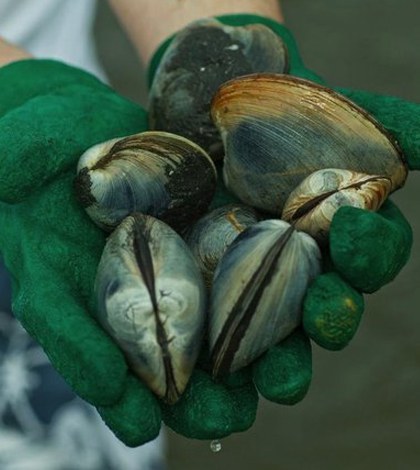Clams tell the story of Great South Bay water quality

Clams in Long Island's Great South Bay were falling victim to nitrogen pollution. (Credit: Kenton Rowe)
Several years into a shellfish restoration project in Long Island’s Great South Bay, officials with the Nature Conservancy of Long Island began to notice that many of the clams they had stocked weren’t making it, according to TreeHugger. And so they commissioned researchers to figure out what was wrong.
The problem, scientists found, was nitrogen pollution, most of which makes it into the bay via wastewater from private septic systems. From there, the Conservancy launched a public awareness campaign to make sure those living around the bay knew about it too.
Now the problem is well known as Long Island’s biggest environmental issue, and it was all because of the clams. Several facts helped to put it at the top of citizens’ minds, including that 65 percent of nitrogen leaking into the bay comes from residential septic systems and that only 30 percent of homes in the nearest county are connected to sewers.
Top image: Clams in Long Island’s Great South Bay were falling victim to nitrogen pollution. (Credit: Kenton Rowe)





0 comments